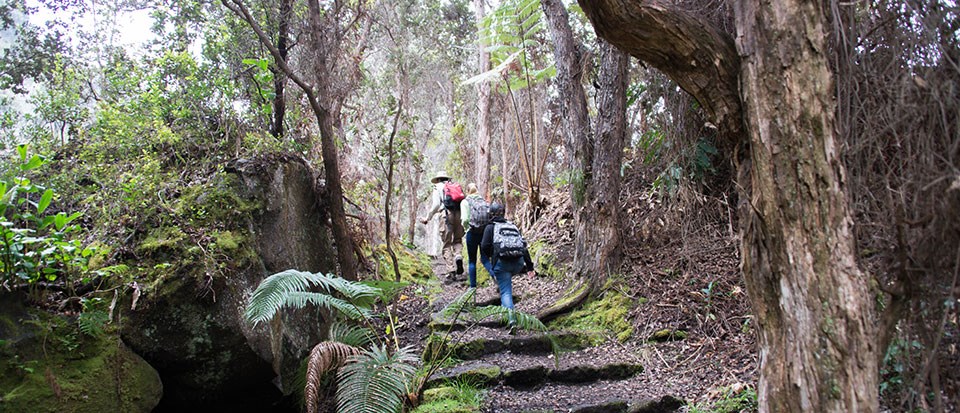
NPS Photo
Our world is getting noisier. With dramatic increases in traffic, the explosion of digital gadgets (think of your friend's constantly chirping smartphone), and our increasing capacity to reach once-remote areas, quiet solitude is a diminishing commodity. Not surprisingly then, the American public comes to parks, in part, with natural quiet in mind. They come for the soothing effect of a gurgling stream, a delicate bird song, or the rustle of leaves on a fall day. Natural sounds have a subtle but profound impact on visitors. In fact, 72% of Americans say one of the most important reasons for preserving national parks is to provide opportunities to experience natural peace and the sounds of nature (Haas and Wakefield 1998).
However, natural quiet in parks is increasingly at risk. To study the effects of human-caused noise on visitors, volunteers at Muir Woods National Monument cataloged all sounds they heard, day and night, for a year. What they found was surprising. It was rarely quiet (Monroe et al. 2007). Parks are experiencing on-going acoustic challenges, from air tours to maintenance equipment. Such noise affects visitors' perceptions of solitude and tranquility and may interfere with how people rate landscapes in national parks (Weinzimmer et al. 2014). In a related study at Muir Woods, visitors found increasing levels of human-made sounds to be unacceptable and even annoying (Monroe et al. 2007). Noisy visitors, loud talking, and other related sounds were found to substantially detract from the quality of the visitor experience. In other studies, noise has been shown to be more disturbing to visitors if it is loud, occurs in bursts, is unpredictable, or interferes with quiet activities such as bird watching.
Isolated areas are not exempt. In Grand Canyon, no single location is totally free of aircraft noise, and in some areas it can be heard up to 43 times in a 20-minute period. After September 11, 2001, backcountry hikers reported knowing that something must be very wrong because there were no commercial aircraft sounds (Bell et al. 2009). Tranquility, it turns out, even in the most remote areas of our national parks, is becoming increasingly scarce.
Published research on the effects of noise on the visitor experience can be found on the Additional Information page.
Last updated: November 17, 2020
